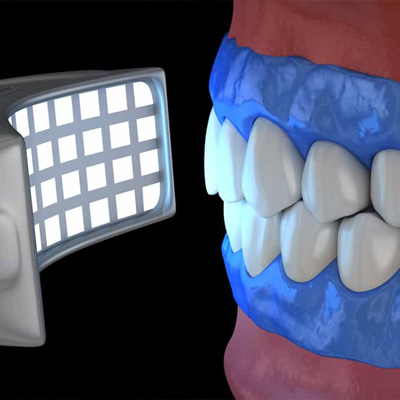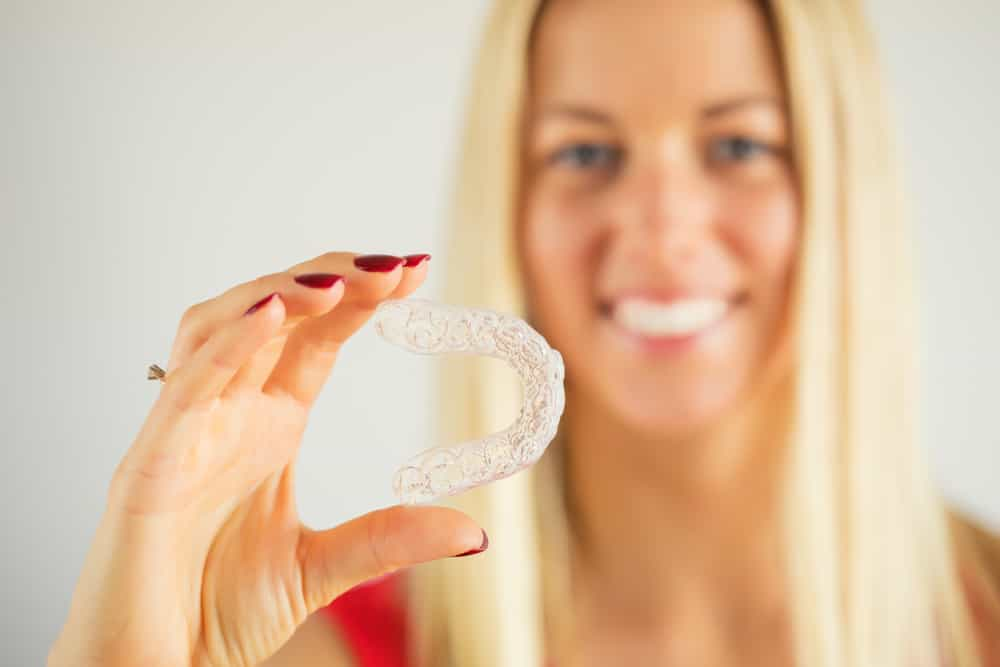Teeth Whitening Kits Reviews: Different Types Of Teeth Whitening Kits

Teeth-Whitening Products
Though in-office visits can assure a nearly smooth whitening treatment, scheduling an appointment with your local dentist is not always convenient. When a professional appointment isn't in the cards—or is rarely an option—there are a number of excellent at-home solutions available from leading brands such as Crest and Auraglow that are well worth the investment. While teeth whitening on your own may appear daunting at first, kits containing pens, strips, and easy-fill trays make the process straightforward and pleasant.

What to Look for in a Teeth-Whitening Product
Gather the necessary components. The most important element to look for in a teeth-whitening kit is hydrogen peroxide. "Most OTC whitening treatments include a concentration of hydrogen peroxide between 7% and 10%, or they contain a derivative of hydrogen peroxide called carbamide, a peroxide that is as effective in higher concentrations," says cosmetic dentist Brian Kantor, DDS of Lowenberg, Lituchy & Kantor in NYC.
Make sure it can keep in contact with your teeth for an extended period of time. Another feature of an over-the-counter teeth-whitening kit is how well the solution can remain isolated on the teeth, according to him. "A teeth-whitening pen will not perform as well as something that stays on the teeth and is not wiped away by saliva," he says.
Look for impacts that will last. Teeth-whitening toothpastes are ineffective since they only remove the tooth's exterior surface discoloration. If you have a lot of stains, they will remove them so your teeth look brighter, but they will not penetrate into the enamel and bleach your teeth. "Using both whitening strips and whitening toothpaste for a quick whitening treatment is a good one-two punch,"
Are Teeth Whiteners Safe?
Teeth whitening is generally safe, but some at-home treatments might cause gum discomfort and tooth sensitivity; if you've had these side effects, you should consult with your dentist to evaluate whether whitening is a suitable option for you (or think you might). Some users may be unable to tolerate higher concentrations of whitening agents, and a dental practitioner can assist them in locating a solution that works for them. Furthermore, avoid cosmetic "fads" or do-it-yourself methods of teeth whitening, which can have undesirable side effects such as decreasing tooth firmness or increasing sensitivity. The use of charcoal toothpastes is a popular example; the abrasiveness of the chemicals can actually peel the enamel from your teeth — "like sanding a floor," as one user put it.
Are Teeth Whiteners Effective?
Depending on the degree of the tooth stains and oral sensitivity, at-home teeth whitening kits can be very successful. Teeth stains can appear on both the surface and inside of the tooth and are produced by a variety of factors, including certain foods and beverages, such as coffee, red wine, dark cola, and particular fruits such as blueberries, tobacco consumption, Inadequate oral hygiene, including insufficient brushing and flossing, According to reviews, teeth whitening solutions can erase certain stains but not all. Cavities or tooth decay can cause teeth to turn a dark gray hue that will not fade with at-home whitening. The same is true for other dental issues, such as plaque buildup or gum inflammation.
The Process of Teeth Whitening
Teeth are not solid structures capable of repelling things; instead, they include microscopic pores. When you eat food or drinks—whether fizzy drinks, wine, or food—these pores absorb a small quantity of it as well. They become embedded in the teeth and cause discoloration over time. Tooth whitening is a fairly safe procedure when performed by a skilled and qualified dentist. Professional dentists open the pores that have absorbed these stains and eliminate them throughout this treatment. The pores do not remain open when the process is completed; instead, they close.
They use specialized tools and materials for this. Many people experience tooth sensitivity after whitening their teeth. The term "sensitivity" refers to how hot or cold foods affect the teeth. As a result, the teeth are more directly exposed to hot or cold temperatures than previously. However, after a few hours, this situation will return to normal.
Which Teeth-Whitening Kits Have the Best Results?
The amount of time your teeth remain brighter varies, and it is impacted by how frequently you drink trigger beverages like coffee, tea, dark cola, red wine, or whether you smoke. The outcomes differ from person to person, depending on how responsive one's teeth are to the bleaching gel. People with yellow or brown teeth usually bleach better than people with gray tones in their texture.
While at-home teeth-whitening treatments often contain a lower amount of hydrogen peroxide than in-office teeth-whitening products, they can nevertheless be effective. However, a higher percentage of chemicals may not be healthier for you. If you are a more sensitive patient, look for a teeth-whitening solution with a lower peroxide content (such as 15 percent or less) or one that does not use peroxides as its primary whitening ingredient. When the tooth surface is clean and free of debris, teeth-whitening treatments perform best.
At-Home Teeth Whitening Kits
Because they are inexpensive and simple to use, over-the-counter teeth whitening products have grown in popularity. They contain less peroxide than dentist-recommended whitening treatments, yet some people can achieve good results, albeit it will take longer. Whitening trays, strips, rinses, and toothpastes are examples of over-the-counter whitening kits and products. The best teeth whitening kits are harm-free and safe. What are the risks of home kits and salon teeth whitening?
Some home kits do not include enough whitening agents to be effective. Also, if the whitening is not performed by a dental professional, the mouthguard given may not fit properly, allowing some of the bleaching gel to leak out onto your gums and into your mouth, causing blistering and irritation. Teeth whitening performed in beauty salons by untrained or unqualified personnel endangers your oral health and is also prohibited.

Different Types of Teeth Whitening
Rinses and Toothpaste for Whitening
You can easily switch to whitening toothpaste in place of your regular toothpaste and mouthwash. Mild abrasives may be present in whitening toothpaste to help remove stains from the surface of teeth during brushing. The American Dental Association (ADA) states that hydrogen peroxide and other whitening chemicals may be found in whitening toothpastes. Even special whitening toothbrushes with condensed bristles are offered to polish teeth without abrasion.
Whitening strips with chewing gum
Chewing gum that is sugar-free and whitening can benefit your teeth in various ways. First, chewing gum after meals encourages salivation, which washes away food and microorganisms. Second, the whitening components in the chewing gum can coat the teeth to stop discoloration. Having whitening gum on hand could aid in maintaining treatment benefits.
You apply whitening strips—tiny plastic strips with a peroxide gel—to your teeth. For a noticeable whitening outcome, whitening strips can be applied for up to 30 minutes every day for up to two weeks, depending on the manufacturer's guidelines.
Whitening trays for teeth
One or more mouthguard-like trays filled with a whitening gel comprise teeth whitening trays. You can purchase tooth whitening trays at the store, or your dentist can make personalized trays for you to use with a whitening solution that is professionally administered. Your dentist will take an impression of your teeth and then custom-make the tray to fit your mouth if you cooperate with them. Trays purchased over the counter contain less peroxide than those obtained through an office process. For the best effects, teeth whitening trays may need to be worn several days a week for up to two weeks, just like whitening strips.
Dental Whitening Procedure Done in-Office
The outcomes of in-office whitening procedures at your dentist's office can be outstanding. Your dentist will first coat them with protection to shield the lips and gums from the potent whitening agents. Your dentist will next apply the whitening gel and activate the procedure by shining an ultraviolet laser on the teeth. The amount of whitening chemicals used during this process is typically more than what you'd find in store-bought goods. Although in-office procedures are more expensive than over-the-counter remedies, the effects are frequently better and last longer.
Teeth Whitening Kits
While different types of teeth whitening kits can produce some results, they are not without drawbacks. Only some stains and tooth discolouration can be removed using teeth whitening kits. In general, tooth whitening kits are not bad for you. However, using both over-the-counter and dentist-administered whitening products has the potential to cause short-term sensitivity in the teeth and gums. The GlossRay Teeth Whitening Kit is one of the best options in its category.





